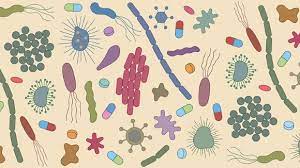
Antimicrobial resistance may lead to 10 million deaths by 2050 – WHO
As worries about antibiotic resistance grow, the World Health Organisation warned on Friday that if immediate action is not done to lessen its burden, 10 million deaths could result from it by 2050.
AMR has been listed by the WHO as one of the top ten global public health threats that humanity is currently facing.
Dr. Laxmikant Chavan, the Technical Officer of AMR at the WHO Nigeria Office, stated as much during his speech at the Association of Nigeria Health Journalists' Seventh Annual Conference, which was organised in cooperation with the WHO and held in Nasarawa State.
AMR refers to a microorganism's (such as bacteria, viruses, fungi, and parasites) capacity to evolve over time and cease responding to medications, making infections more difficult to treat and raising the risk.
"There is a substantial cost associated with AMR to national economies and development. In the most dire circumstances, AMR might result in a decline in GDP comparable to the 2008 financial crisis.
But the effects on the economy would probably worsen and linger longer in lower-income nations.
"AMR is jeopardising the attainment of the Sustainable Development Goals and jeopardising the gains of the Millennium Development Goals," he declared.
Concerned about the growing use of antibiotics, the expert pointed out that the world's consumption of antibiotics for humans, animals, and agriculture rose by 30% between 2000 and 2010, from 50 billion standard units to 70 billion standard units.
He mentioned that poor sanitation, a shortage of clean water, and the abuse and overuse of antibiotics
"Livestock consumed at least 63,200 tonnes of antibiotics in 2010," he revealed, "partly due to rising country GDPs and an increased demand for animal food products."
Chavan called on the media to be a major force in influencing public opinion and raising awareness of the need for ethical reporting on AMR-related issues.





